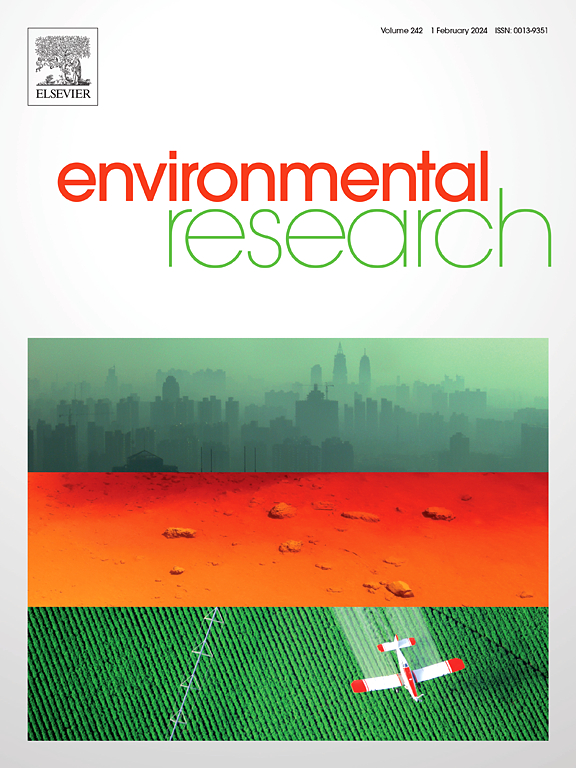全氟和多氟烷基物质(PFAS)和microRNA:消防员全表观基因组关联研究。
IF 7.7
2区 环境科学与生态学
Q1 ENVIRONMENTAL SCIENCES
引用次数: 0
摘要
消防职业被列为1类致癌物。消防员罹患癌症的风险增加,部分原因可能是职业接触一系列化学品增加,包括全氟烷基和多氟烷基物质(PFAS)。一些PFAS是已知的和可疑的人类致癌物。研究消防员对这些PFAS暴露的表观遗传反应可能有助于确定特定癌症的生物学途径,以及先前未确定的与PFAS相关的健康结果。因此,我们研究了消防员血清PFAS浓度与miRNA表达的关系。从美国6个地点收集的303名消防员的血清样本进行了9种PFAS和miRNA表达的分析。采用协变量调整的线性回归来估计log PFAS与miRNA表达之间的相关性,错误发现率(FDR)设为0.05为显著性,并以FDR q为探索性截止值本文章由计算机程序翻译,如有差异,请以英文原文为准。
Per- and polyfluoroalkyl substances (PFAS) and microRNA: An epigenome-wide association study in firefighters
The occupation of firefighting is classified as a Group 1 carcinogen. Increased cancer risk among firefighters may be partly attributable to increased occupational exposure to a range of chemicals, including per- and polyfluoroalkyl substances (PFAS). Some PFAS are known and suspect human carcinogens. Investigating epigenetic response to these PFAS exposures in firefighters may help to identify biological pathways of specific cancers, and previously unidentified health outcomes that are associated with PFAS. We therefore investigated the associations of serum PFAS concentrations with miRNA expression in firefighters. Serum samples collected from 303 firefighters from 6 sites across the USA were analyzed for 9 PFAS along with miRNA expression. Covariate-adjusted linear regression was used to estimate associations between log PFAS and miRNA expression, with false discovery rate (FDR) set to 0.05 for significance, and an exploratory cutoff of FDR q < 0.20. Gene set enrichment analysis (GSEA) was performed using miRTarBase's miRWalk pathways. Age, race-ethnicity, BMI, fire department, and sex were controlled for in all models. At FDR<0.05, the linear isomer of perfluorooctane sulfonic acid (PFOS) was inversely associated with miR-128-1-5p expression (Beta = −0.146, 95 % CI -0.216, −0.076). At a relaxed FDR of 0.20, we observed inverse associations for the sum of branched isomers of PFOS (Sm-PFOS) with 5 miRNAs (let-7d-5p, let-7a-5p, miR-423-5p, let-7b-5p, miR-629-5p). Several pathways were enriched for multiple PFAS, including those correlated with certain cancers, blood diseases, thyroid disorders, autoimmune disorders, and neurological outcomes. Some PFAS in firefighters were found to be associated with alteration of miRNA consistent with increased risk for a range of chronic diseases.
求助全文
通过发布文献求助,成功后即可免费获取论文全文。
去求助
来源期刊

Environmental Research
环境科学-公共卫生、环境卫生与职业卫生
CiteScore
12.60
自引率
8.40%
发文量
2480
审稿时长
4.7 months
期刊介绍:
The Environmental Research journal presents a broad range of interdisciplinary research, focused on addressing worldwide environmental concerns and featuring innovative findings. Our publication strives to explore relevant anthropogenic issues across various environmental sectors, showcasing practical applications in real-life settings.
 求助内容:
求助内容: 应助结果提醒方式:
应助结果提醒方式:


